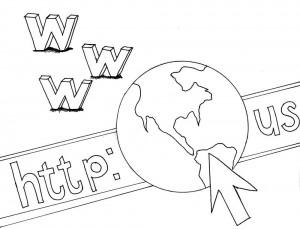USC online presence must be accessible
This registration period USC students are seeing a new face of Web Registration. Noticeably more colorful, with larger text and more convenient menus, Web Registration for spring 2012 appears far more user-friendly than Web Registration of semesters past.
It is commendable that USC is making efforts to improve the usability and appearance of its individual websites. Many key issues, however, remain with USC web-space as a whole. Just as USC seeks to create an active, well-connected student body, USC should seek to create an active, well-connected network of websites for its student body, faculty, alumni and other users.
USC’s network of websites is far from unified. Though it is beneficial that many different areas of USC have websites with unique design elements, these individual websites should present a logical flow of hyperlinks so students can quickly reach the information they are looking for.
Oftentimes, relevant pages are not easily discoverable via hyperlinks. When looking up information about USC majors under the undergraduate admissions section, for example, students are linked to the USC course catalogue. Hyperlinks, however, are not clearly available to reach additional information on other official USC sites, such as descriptions of majors and minors in USC’s different colleges. Students can reach valuable information about specific majors on the USC Dana and David Dornsife College of Letters, Arts and Sciences website, but the course catalogue website does not link these pages for each respective major.
In this case, USC’s network of websites offers the information students would need about specific majors, including who to contact for additional questions. This information, however, is not presented in the same place, or within a click-able distance.
Students are required to take unnecessarily complicated measures to get desired information from the web. It would be beneficial for students if USC optimized the linking among its various websites to ensure students are informed by the most relevant, correct information the university has to offer regarding its various programs and functions.
USC also requires students to make many different log-ins, oftentimes for very specific purposes. An incoming freshman, for example, in addition to having to register for a USC email will likely have to create separate accounts for numerous other functions.
Consider a freshman majoring in biological sciences, taking Introductory Chemistry, Introductory Biology, a G.E., and a class to clear a foreign language requirement. He will likely have to create separate accounts for at least the following functions: financial aid, Blackboard, Mastering chemistry/physics/etc. and a chemistry lab, not to mention other registrations that become necessary as this student becomes increasingly involved on campus.
Unifying the log-in procedures for such diverse websites is a difficult task, especially at such a large university. It is not so difficult, however, to maintain updated portal websites with easy access. USC should make additional efforts to make its own websites more navigable, not just as individual pages but in relation to each other.
Clear efforts have been made to unify accounts for students’ experiences. For example, the myUSC portal site allows students to quickly access many commonly used services. The Student Involvement Transcript further consolidates students’ campus involvement information. But availability of information alone should not be a sufficient goal for a high-end university. USC web space should continue to evolve not just to look prettier but also to function more smoothly.
Naturally, form follows function, and a beautifully functional USC will reflect itself in a beautifully formed website. Whether in cyberspace, campus space or some other place, USC should maintain efforts focused on optimizing functionality.
Alan Wong is a sophomore majoring in East Asian languages and cultures. His column “Re-defining USC” runs Tuesdays.

